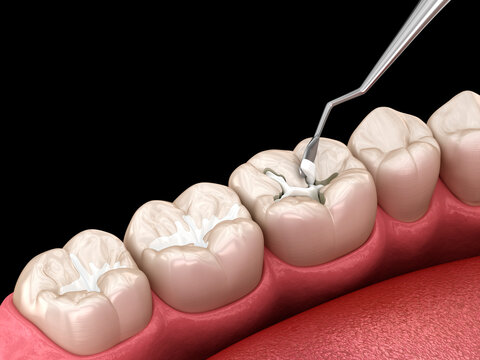A healthy smile is not just about appearance; it plays a major role in your comfort, confidence, and oral health. When tooth decay or damage occurs, a filling becomes one of the most effective solutions to restore strength and function. With modern dental advancements, patients now have access to various filling materials designed to blend seamlessly with natural teeth while offering long-lasting durability. In the heart of the UAE, people seeking restorative treatments often explore different options to understand which type suits them best. This is why learning about the types of fillings available is essential, especially for those considering Dental Tooth Filling in Dubai for a healthier and stronger smile.
Understanding Dental Tooth Fillings
A dental filling is used to treat cavities caused by decay or to repair cracked, worn-down, or damaged teeth. The process involves removing the decayed portion of the tooth and filling the space with a durable material. The type of filling you choose can influence the appearance, strength, and longevity of the restored tooth. Fortunately, modern dentistry offers several advanced materials designed to provide a natural look and a comfortable bite.
Composite Resin Fillings
Composite resin fillings are one of the most popular options today, especially for people who prefer a natural-looking result. These fillings are made from a tooth-colored resin material that blends smoothly with your existing teeth. The biggest advantage of composite fillings is their aesthetic appeal. Since they match the shade of natural enamel, they are commonly used in visible areas such as the front teeth.
Composite resin is also flexible during the procedure, allowing for minimal removal of healthy tooth structure. This preserves more of the natural tooth, which contributes to long-term oral health. Additionally, these fillings bond directly to the tooth surface, providing additional strength and stability.
Amalgam Fillings
Amalgam fillings have been used for many decades due to their durability and strength. They are made from a mixture of metals, including silver and tin, making them highly resistant to wear and ideal for back teeth that handle heavy chewing. For patients who prioritize longevity over appearance, amalgam fillings can be a reliable choice.
Although they do not offer the tooth-colored look of composite resin, they remain a practical option in cases where a strong, long-lasting solution is required. Their ability to withstand pressure and resist fractures has kept them relevant even with the introduction of newer materials.
Ceramic Fillings
Ceramic or porcelain fillings are known for their exceptional aesthetics and resistance to staining. These fillings are crafted to match the color and translucency of natural teeth, offering a beautiful, lifelike appearance. Ceramic fillings are often chosen for visible areas of the mouth or for patients who want a premium, cosmetic-focused solution.
One of their main advantages is that they are highly resistant to discoloration. While composite resin can stain over time, ceramic maintains its appearance for years. These fillings are also strong and long-lasting, making them a great option for a blend of beauty and durability.
Glass Ionomer Fillings
Glass ionomer fillings are made from a blend of acrylic and a specific type of glass material. They are particularly useful for patients who need a filling in non-chewing areas or for situations where a simple and gentle solution is required. Glass ionomer fillings release fluoride over time, which helps protect the tooth from further decay—an important benefit for individuals with high cavity risk.
While they may not match the strength or appearance of composite or ceramic fillings, they serve a valuable purpose, especially for children or cases requiring quick and minimally invasive treatment.
Gold Fillings
Gold fillings are known for their exceptional durability and long lifespan. Made from a gold alloy, these fillings are resistant to wear and corrosion, making them one of the strongest filling types available. Many patients appreciate their reliability and long-term performance.
Although they are more noticeable than tooth-colored options, gold fillings have become a trusted choice for those who value long-lasting results. They can last for many years with proper oral hygiene, making them a strong contender for back teeth restorations.

Choosing the Right Type of Filling
Selecting the right filling depends on several factors, including the location of the cavity, the extent of the damage, your aesthetic preferences, and the material’s longevity. Tooth-colored options like composite and ceramic are ideal for visible areas, while stronger materials like amalgam or gold may be better for back teeth. Understanding the benefits of each type allows you to make an informed decision that aligns with your comfort and long-term dental health goals.
The Role of Advanced Dental Care
Modern dental care in the UAE has evolved to offer safe, precise, and effective restorative treatments. With advanced tools and materials, fillings today are more comfortable, durable, and natural-looking than ever before. Whether you’re seeking a simple restoration or a more aesthetic solution, you’ll find various options tailored to your needs.
Final Thoughts
Tooth fillings remain one of the most important procedures for restoring damaged or decayed teeth. With multiple types available—each offering unique benefits—you can choose a solution that fits both your oral health and cosmetic goals. Whether you prefer durability, aesthetics, or minimal invasiveness, there is a filling material designed just for you. Understanding the different types helps you make an informed choice, especially when considering Dental Tooth Filling Dubai as a long-term investment in your smile.





Comments